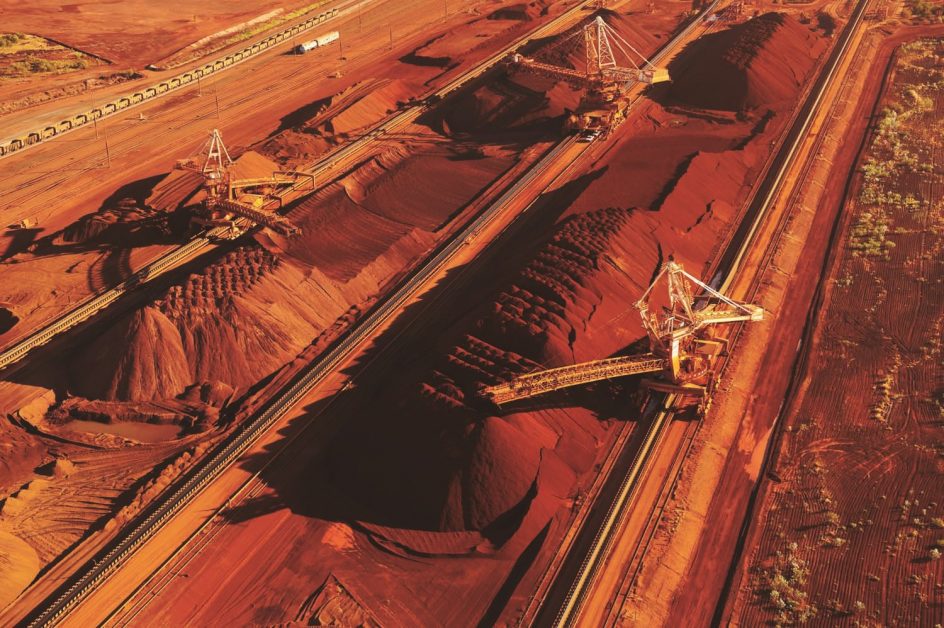August 3, 2020: According to FIMI, iron ore exports in 2019-20 rose to 36,623.71 tonnes from 16,198.90 in 2018-19.
Owing to the strong demand from China, iron ore export from India touched an eight-year high in the first half of 2020 and the prices reached a new high. However, the beneficiaries weree miners in the eastern states as restrictions on the export from Karnataka and the ban on Goa mining continues.
According to the Federation of Indian Mineral Industries (FIMI), iron ore exports in 2019-20 rose to 36,623.71 tonnes from 16,198.90 in 2018-19. Export to China rose to 31,605.05 tonnes from 12,153.28 tonnes, almost 160 per cent jump. According to reports quoting China’s customs data, shipments of the iron ore from India more than doubled to 20 million tonnes in the six months through June from a year earlier. It was also the highest since the South Asian country shipped out 27.8 million tonnes in the first half of 2012.
FIMI added, owing to the strong demand from China steel mills in China and worldwide have started full-fledged operations, and demand of the iron ore had gone up, the global iron ore prices have touched seven months high. Futures for iron-ore with 62 per cent iron content jumped 10 per cent to nearly $107 per tonne (highest in China’s Dalian Commodity Exchange since October 2019).
In the wake of weak domestic demand, India too had exported a total of 23 million tonnes of ore & pellets from December 19 to May 20, and it is highest to the tune of 6 mt in May 2020. Major iron ore-rich states like Odisha contributed to the rise in export of iron ore from India even at a time during April 2020 when there was a huge dip in export from other sectors owing to the lockdown. A study by CARE ratings noted that outbound iron ore shipments rose 17.5 per cent during April 2020.
Prevailing international prices (spot benchmark price CFR China) are varying from S$77 per tonne for 58 per cent Fe to $119 for 65 per cent Fe. The domestic ex-mine price (including taxes and levies) varies from Rs 2,000 (Fines 62 per cent Fe) to Rs 4,500 (Lumps 63 per cent Fe) depending upon the grade and quality.
R K Sharma, Secretary-General, FIMI says one of the factors responsible for higher exports to China since 2012 is the decision of the government to auction non-captive iron ore mines in the eastern sector, where leases expired on March 31, 2020. The mining units who had stockpiles of unsold iron ore had to find avenues to get rid of it. Since the domestic steel industry does not require iron ore of less than 62 per cent Fe content, the only alternative was China at whatever price the mining units can get.
Goa is closed and there is a ban on exports from Karnataka, hence exports can take place from the eastern sector only.
He noted, Goa is closed as per the Supreme Court decision, from Karnataka also, there cannot be any exports as per the Supreme Court decision. However, the bulk buyer in Karnataka is not able to absorb the entire quantity being mined now in Karnataka. There is a stockpile of 13.80 million tonnes at the close of 2018-19 at various mines in Karnataka.
Puti Gaonkar, President, Goa Mining People’s Front, which represent Goa mining industry added, the majority of iron ore exports from Goa used to go to China, Japan, Taiwan, and some other far eastern countries, but on account of stop-start mining most of the clients in have moved on to another regular supplier of Iron ore from Brazil and Australia. Due to the sheer size of Chinese demand during the period of 2016-2018, the Goan Origin Ore was mainly exported to China.
He added although the present restrictions have impacted the miners in terms of reduced profitability or loss of revenue. These restrictions, especially those in Goa have had a far-reaching impact on the livelihood of people. For the last 9 years, the mining sector which was and continues to be the largest source of continuous livelihood to people of Goa especially in the hinterlands has had to endure tough and uncertain times. The same has been aggravated in the last 2 years after the second mining stoppage.
Goa’s annual revenue loss on account of the mining stoppage is around Rs 4,000 crore, he said.
Sharma said it is very difficult to predict the demand for iron ore from China. India’s exports to China are probably the least which any other country may export to China. It will be observed that Indian iron ore has not many roles in imports of iron ore by China. India is the least supplier in the international export of iron ore and to set the prices, Indian exports have to follow the prices already decided by Australia and Brazil. It is very difficult at present to visualize the outlook for the prices and demand in the domestic and export market.
Since the Global Market Iron ore trade is dominated by China, its demand for iron ore will increase in the short term with blast furnace steelmakers stepping up operations, but the demand growth will be capped in the medium-to-long run amid the fast spread of the global Covid-19 outbreak. As a consequence of this, it was noted that those factors, together with expectations of rising supply, will keep iron ore prices under pressure. While locally to the demand is expected to be governed by the spread of Covid-19 outbreak, added Gaonakar.
Source: Business Standard






